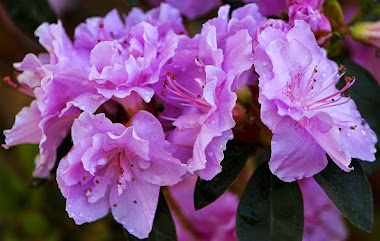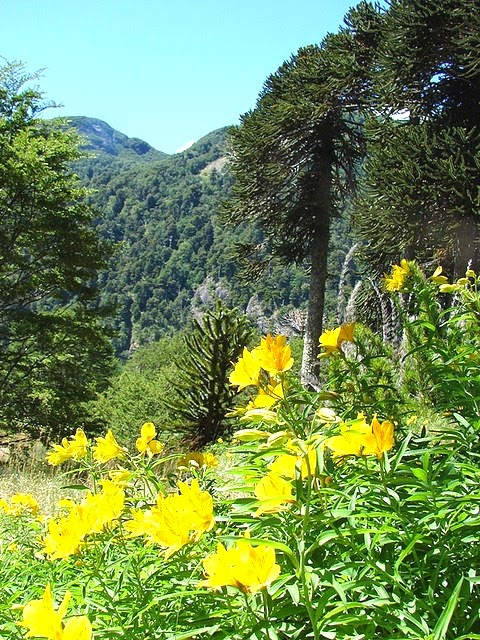THE BATTLE OF CORONEL
The Battle of Coronel took place on November 1, 1914, just off the coast of Chile, at Coronel in the vicinity of the Santa Maria Island.
On that tragic day, two battle fleets faced each other with the intention of fighting to the death. These two fleets were the British Navy Squadron under the command of Rear Admiral Sir Christopher Cradock and the German East Asia Squadron under the command of Vice-Admiral Graf Maximilian Von Spee.
The German fleet had originally been stationed along the coasts of China and other East Asian countries. Great Britain and her allies had captured the naval bases that were used by the German fleet, so this now homeless squadron was crossing the Pacific Ocean in an effort to reach Europe once again.
On that fateful day, November 1, 1914, both squadrons were to meet face to face just off the Santa Maria Island on the coast of central Chile.
The Battle of Coronel was a great disaster for the British Navy: the two main battleships of this Squadron, HMS Good Hope and HMS Monmouth, were sunk with no survivors. The smaller ships Glasgow and Otranto managed to flee.
The number of British casualties lost in that battle was high, it is thought that over 1,400 officers and crew members lost their lives that day.
Here is a very clear diagram of the Battle of Coronel that clearly shows the Santa Maria Island and the port of Coronel.
THE BATTLE OF CORONEL.
Click to enlarge
Source: Hic et nunc, CC BY SA 3.0. Wikimedia Commons.
And here is an illustration, taken from a German postcard.
THE BATTLE OF CORONEL, art reproduction.
Click to enlarge
Source: public domain, Wikimedia Commons.
At present, I live at Concepcion, quite near the locality of Coronel. I am definitely taking part in the commemoration ceremony on Saturday the 1st November.
I have already received my invitation, sent to me by the entities that are hosting the event. These are the Municipality of Coronel, the Chilean Navy as the representative of the Chilean Government and the British Embassy in Santiago.
I have achieved some small measure of fame in the area due to the fact that I recently published my eBook in Kindle format, on Amazon.
The title of my book is as follows: WORLD WAR ONE NAVAL BATTLES IN SOUTH AMERICAN WATERS.
The book reviews all three Battles, the one at Coronel and the two that followed as a result of this one, the Battle of the Falkland Islands and the Battle of Mas a Tierra.
You can easily find the book on my Author page at Amazon. The link for my author page on Amazon is as follows.
I hope you get to read it, it’s a good book!
PRESENT DAY CORONEL.
The photos show some details of the thriving city of Coronel, where so many outside visitors will be descending en masse for the Commemoration Ceremony.
THE PLAZA 21 DE MAYO.
The ceremony will take place here. This is known as the “Plaza de los Ingleses” because it was donated by the British residents at the end of the XIX century. The Clock Tower dominates the Square.
THE CLOCK TOWER AT THE PLAZA 21 DE MAYO.
Click to enlarge
Source: ©Joan Veronica Robertson, 2014.
SCENE FROM THE PLAZA 21 DE MAYO.
Click to enlarge
Source: ©Joan Veronica Robertson, 2014.
THE BATTLE OF CORONEL MONUMENT.
This monument was placed at the Plaza 21 de Mayo and was a joint effort of the Anglo-Chilean Society and the Chilean Navy, in 1989.
Click to enlarge
Source: © Joan Veronica Robertson, 2014.
THE ENTRANCE TO THE PUCHOCO COAL MINE SHAFT.
This mine is closed down now and this is a museum. But the coal mines were the main reason the two fleets met opposite Coronel in 1914. It was where all ships reloaded their supplies of coal when sailing round the Straights of Magellan in the extreme south of the continent.
Click to enlarge
Source: tlozfh, CC BY SA 3.0. Wikimedia Commons
THE MAIN SQUARE AT PRESENT DAY CORONEL.
Click to enlarge
Source: © Joan Veronica Robertson, 2914.
THE ALESSANDRI PARK, A NATURAL RESERVE
This is a lovely thematic Park, mostly related to native forestry specimens, trees and natural vegetation of the region. The entrance is free.
Click to enlarge
Source: tlozfh, CC BY SA 3.0. Wikimnedia Commons.
LAST BUT NOT LEAST, MY ORIGINAL INFORMATIVE VIDEO. (YouTube).
I’m slowly improving at creating these short videos. I’m really enjoying the challenge!
I do hope you have found this article interesting!
SPANISH VERSION
(This blog is bilingual so that it may be used for the study of languages, both English and Spanish).
La Conmemoración del Centenario de la Batalla de Coronel. (Primera Guerra Mundial).
La Batalla de Coronel sucedió el primero de Noviembre de 1914, muy cerca de las costas de Chile, en las cercanías de la Isla Santa María frente al Puerto de Coronel.
En ese fatídico día se enfrentaron dos flotas con el propósito de dar guerra sin cuartel. Estas flotas eran un escuadrón de la Marina Británica al mando del Vicealmirante Sr Christopher Cradock, y el Escuadrón Alemán de Asia Oriental, al mando del Vicealmirante Graf Maximilian Von Spee.
La flota alemana originariamente tenía estaciones en las costas de China y otros países del Este Asiático, pero Gran Bretaña y sus aliados habían capturado estas bases navales, de modo que al encontrarse a la deriva en esos mares, Von Spee conducía sus barcos a través del Océano Pacífico en un intento por llegar de regreso a Europa.
En esa fecha de tan penoso desenlace, ambas escuadras se encontraron frente a frente.
La Batalla de Coronel se constituyó en un gran desastre para la Marina Real de Gran Bretaña: los dos principales barcos acorazados del Escuadrón, HMS Good Hope y HMS Monmouth fueron hundidos sin sobrevivientes. Los barcos menores “Glasgow” y “Otranto” lograron escapar.
El número de víctimas de los barcos británicos fue significativo, se estima que más de 1.400 efectivos perdieron sus vidas en ese día.
La foto muestra un diagrama muy claro del desarrollo de la batalla.
También se incluye una ilustración, tomada de una antigua postal alemana.
En la actualidad, vivo en Concepción, muy cerca de la localidad de Coronel. Es seguro que participaré en la ceremonia conmemorativa a desarrollarse el Sábado 01 de Noviembre próximo, ya me llegó la invitación, en la que figuran los patrocinadores del evento, esto es, la Municipalidad de Coronel, la Armada de Chile en representación del Gobierno de Chile y la Embajada Británica en Santiago.
En lo personal, he logrado una módica cuota de fama por estos lados, debido a la publicación de mi libro en formato eBook, que se encuentra en Amazon.com para Kindle.
El título de mi libro es - WORLD WAR ONE NAVAL BATTLES IN SOUTH
AMERICAN WATERS.
AMERICAN WATERS.
El link para llegar a mi página de Autora en Amazon es el siguiente:
Ojalá lo puedan leer, es un buen libro!
En lo que resta de este post, se incluyen diversas fotos sobre la ciudad-puerto de Coronel, tales como:
-La Plaza 21 de Mayo con su Torre del Reloj, sus árboles y el monolito recordatorio de la Batalla de Coronel.
-La entrada a la mina Puchoco, hoy clausurada y convertida en museo.
-El Parque Alessandri, una reserva natural.
Y finalmente, my video original publicado en YouTube!
Espero que lo disfruten!
Well, I do hope you enjoyed this post! I hope to see you soon, and don’t forget to click “comments” below. That’s where you can leave your thoughts on these events.
© jveronr, 2014 (Joan Veronica Robertson)

%2Bhic%2Bet%2Bnunc%2C%2BCC%2BBY%2BSA%2B3.0.%2BWikimedia%2BCommons.jpg)












.%2BLiam%2BQuinn%2C%2BCC%2BBY%2BSA%2B2.0.%2BWikimedia%2BCommons.jpg)




